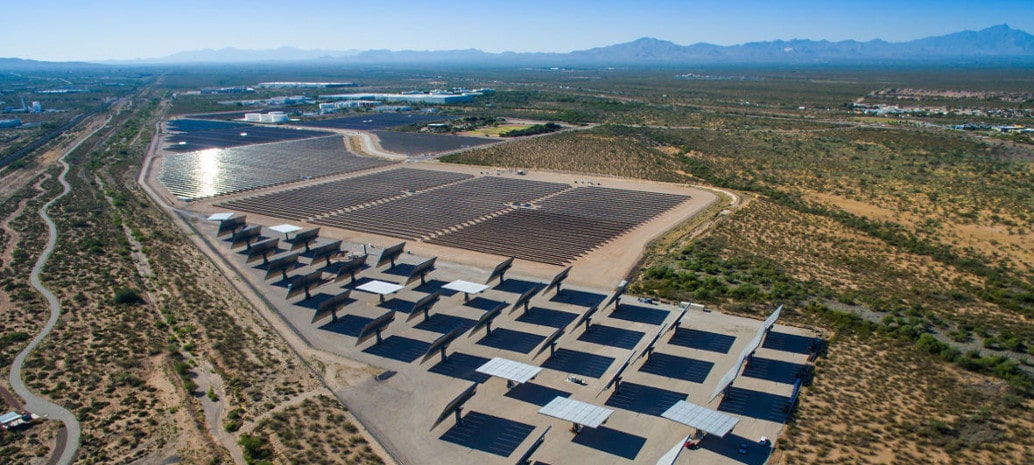Yesterday German utility holding company E.ON announced that it had begun construction on a 10 MW lithium ion battery project in Arizona, which will provide frequency response and voltage control to Tucson Electric Power (TEP) under a 10-year contract.
The Iron Horse project in E.ON North America’s first energy storage project, and is paired with a 2 MW PV array at the University or Arizona’s Science and Technology Park. The company expects to complete the battery system in the first half of 2017.
TEP says that it will use Iron Horse’s capacity to not only stabilize its grid, but to study how energy storage can support the expansion of solar and wind.
“We’re working very hard to integrate cost effective, innovative technologies that will improve service for our customers and support our expansion of renewable energy,” said TEP Senior Director of Renewable Energy Supply Carmine Tilghman in a press statement.
“That’s why E.ON is an excellent partner for a project like this. E.ON understands the promise and challenges of renewable energy and has demonstrated its expertise on other joint projects with us.”
This project expands an existing relationship between E.ON and TEP regarding renewable energy. E.ON is currently supplying electricity to TEP from two PV plants totaling 20 MW, and has partnered with TEP on the construction of a 17 MW PV plant at a U.S. military base.
This announcement also joins several recent notices related to large energy storage systems in the United States. E.ON’s press release came the same day that Switzerland’s Leclanché announced that it will serve as the construction contractor for a 20 MW energy storage project in Chicago, and less than six weeks after Tesla announced that it will supply a 20 MW/80 MWh battery for utility Southern California Edison.
GTM Research says that aside from the California procurement, these projects are not necessarily indicative of a larger trend. “Large scale (front-of-the-meter) energy storage has traditionally been driven by two factors, utility RFPs and favorable wholesale market design (such as the frequency regulation market in PJM),” GTM Research Senior Energy Storage Analyst Daniel Finn-Foley told pv magazine.
“In the short term we don’t expect to see much movement in wholesale markets, as PJM’s dynamic regulation market has been saturated and few other wholesale markets have the necessary tariff designs to enable advanced energy storage participation.”
However, Finn-Foley says that this could change in coming years due to action from FERC, and also notes that the Aliso Canyon gas leak is expected to spur around 85 MW of energy storage deployment in Southern California over the next two quarters.
“This activity, along with other systems coming online, means that the next six months will be some of the most significant yet for energy storage, with potentially more than 100 MW coming online in Q4 2016 and as much as 50 MW more in Q1 2017, at which point the market is poised to slow again until more utility-procured projects come online.”
This content is protected by copyright and may not be reused. If you want to cooperate with us and would like to reuse some of our content, please contact: editors@pv-magazine.com.









By submitting this form you agree to pv magazine using your data for the purposes of publishing your comment.
Your personal data will only be disclosed or otherwise transmitted to third parties for the purposes of spam filtering or if this is necessary for technical maintenance of the website. Any other transfer to third parties will not take place unless this is justified on the basis of applicable data protection regulations or if pv magazine is legally obliged to do so.
You may revoke this consent at any time with effect for the future, in which case your personal data will be deleted immediately. Otherwise, your data will be deleted if pv magazine has processed your request or the purpose of data storage is fulfilled.
Further information on data privacy can be found in our Data Protection Policy.